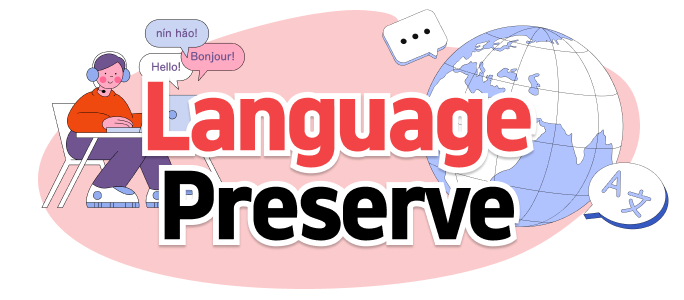Leveraging AI to Preserve and Promote Indigenous Languages in Mindanao
The reconciliation of cutting-edge technology with the preservation of Indigenous languages is an emerging endeavor proving to be both innovative and insightful. As technological advancements often pose a threat to these linguistic treasures, a fresh initiative in Mindanao, spearheaded by the University of Immaculate Conception (UIC) in Davao City, is transforming this dynamic by tapping into emerging technologies to safeguard indigenous heritage.
The Role of University of Immaculate Conception and DOST-PCIEERD
Located at the UIC-Bangkerohan Campus, the Mindanao Natural Language Processing Research and Development Laboratory is a pivotal milestone in this tech-forward mission. This collaboration between UIC and the Department of Science and Technology-Philippine Council for Industry, Energy, and Emerging Technology Research and Development (DOST-PCIEERD) marks a significant pursuit of introducing artificial intelligence (AI) into Indigenous language preservation.
Enrico Paringit, DOST-PCIEERD Executive Director, during the inauguration of the laboratory, highlighted the initiative’s importance. The laboratory isn't just a step towards technological innovation, but a necessary stride for the preservation and documentation of Indigenous languages, which are gradually vanishing due to the dwindling number of active speakers.
A New Wave of Language Preservation
The laboratory is equipped with a P5-million grant furnished by DOST-PCIEERD’s Institutional Development Program. It is dedicated primarily to Natural Language Processing (NLP), a junction of artificial intelligence and human language which seeks to harmonize human-machine interaction. This element is crucial in understanding and converting Indigenous languages into digital tools that can be effectively utilized.
Kirstine Mae Adlaon, MinNa LProc project leader, sheds light on their initiatives: technologies such as machine translation systems and dialogue frameworks. The machine translation system offers an easy conversion of sentences from Indigenous tongues to other languages and vice versa, enhancing cross-linguistic communication. Meanwhile, dialogue systems like chatbots enable inquiries and support using Indigenous languages.
She stated that while natural language processing is broadly explored, their personalized approach using Indigenous languages serves as a significant contribution to their preservation and revitalization through effective collection, digitization, storage, and circulation of linguistic resources.
Focusing on Mindanaoan Languages
Presently, the laboratory focuses on three Indigenous dialects from the Davao region: Manobo, Mansaka, and Kalagan. However, ambition isn’t capped there — expansion plans are underway targeting other six endangered languages in Mindanao such as Subanen, Butuanon, Kinamiging Manobo, Bagobo-Klata, Kagan, and Kalagan.
Adlaon proudly expressed her future aspirations, laying out the next stages for the laboratory: further development and safeguarding of these endangered languages. While DOST-PCIEERD usefully provides computing equipment aid, the symbiotic relationship with the National Commission on Indigenous Peoples XI plays a pivotal role, especially in obtaining critical linguistic data.
Community Support and Engagement
The coordination extends beyond institutions and into Indigenous communities. NCIP XI was instrumental in facilitating contact with Indigenous Peoples communities to gather data and validate the project’s progress. Their support underscores the project, easing communication channels with the communities involved.
Communities visited expressed immense support and welcomed these initiatives. Datu Edris Mamukid, Overall Datu of the Indigenous Cultural Communities of Kagan in Banaybanay, Davao Oriental, lauded the project for its significant role in language and cultural preservation amidst rapid environmental changes. This venture allows their intricate and beautiful cultural and linguistic heritage to reach broader audiences.
Challenges and Future Directions
While the project has enjoyed a successful start, there's ongoing recognition of the challenges ahead, particularly the need for extensive datasets to ensure tool reliability. Adlaon explained that their dataset is still in its nascent stage, numbering in the thousands compared to the billions of parameters utilized by models like ChatGPT and Google.
However, acknowledging what has already been accomplished provides motivation. They aim to expand their dataset, aiming for broader inclusion of other endangered Indigenous languages, and seek partnerships with organizations like WikiClub Zamboanga for further linguistic collaborations.
Continued Efforts and Opportunities
The establishment of the laboratory not only opens doors for new research opportunities but paves the way for future endeavors involving science and technology in language preservation. It's a call for a collaborative effort, extending an open invitation to researchers interested in similar projects or related initiatives.
Leveraging AI in such innovative ways to preserve indigenous languages in Mindanao could pioneer similar projects, setting a precedent that intertwines cultural preservation with technological advancement. This duality is the driving force behind maintaining linguistic diversity in an era where technology increasingly plays a pivotal role in every facet of life.
출처 : Original Source

